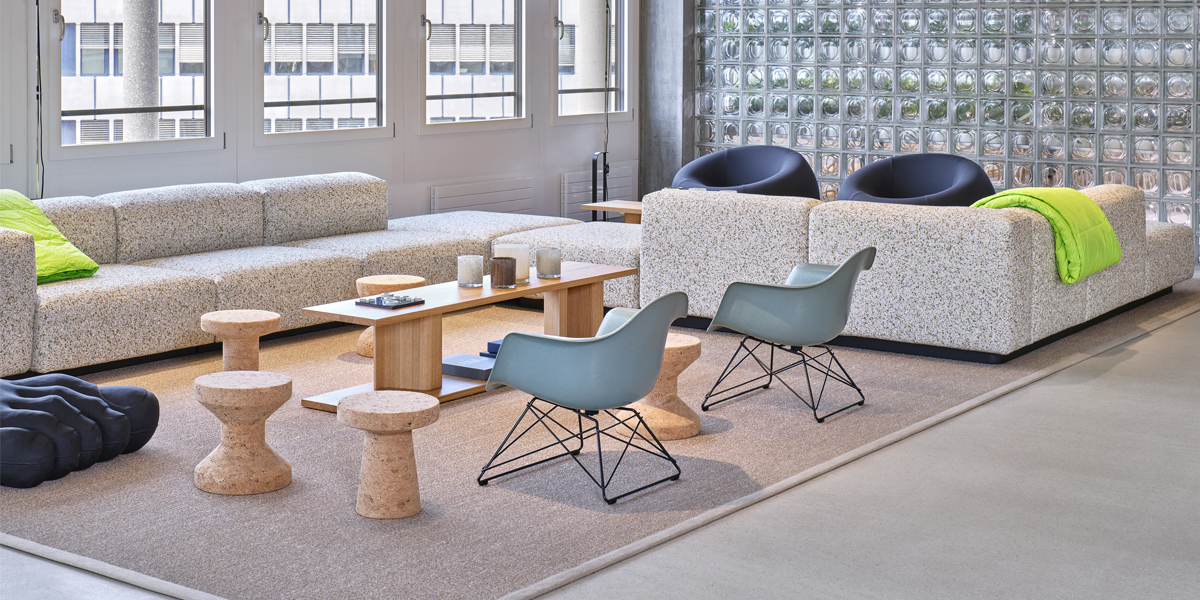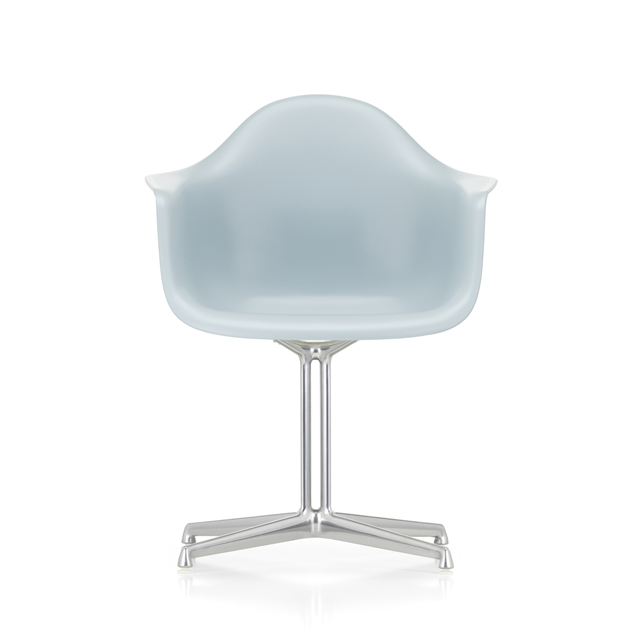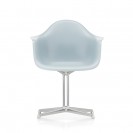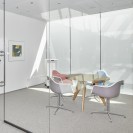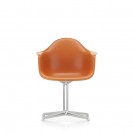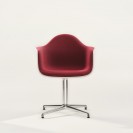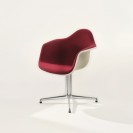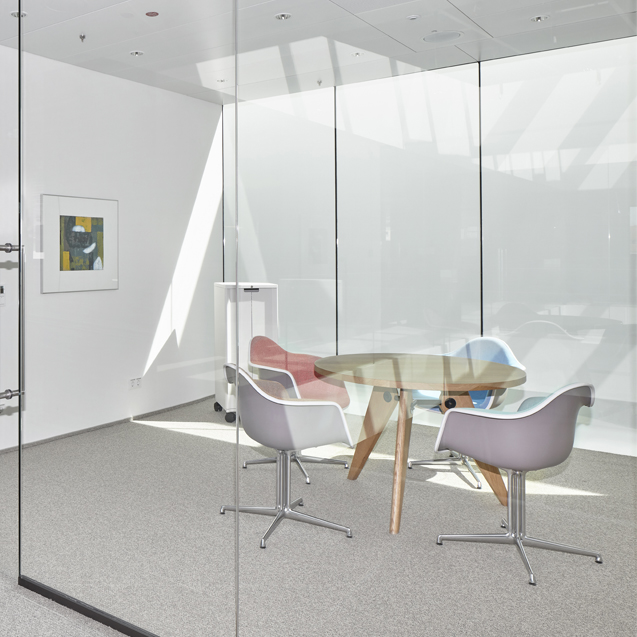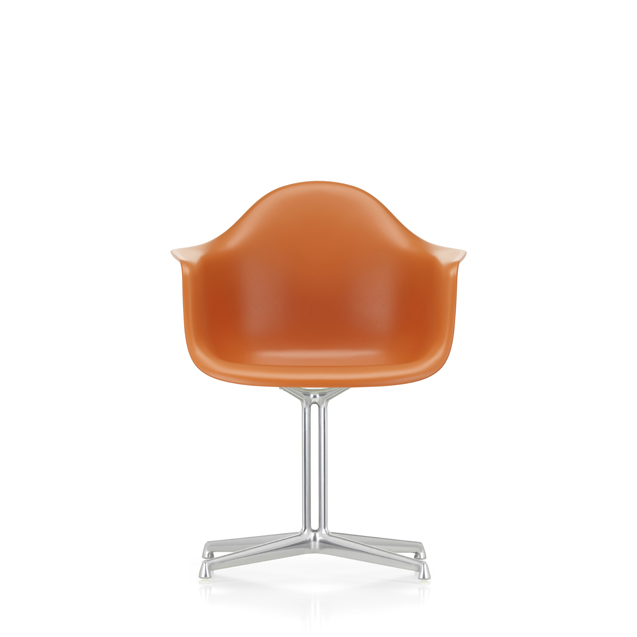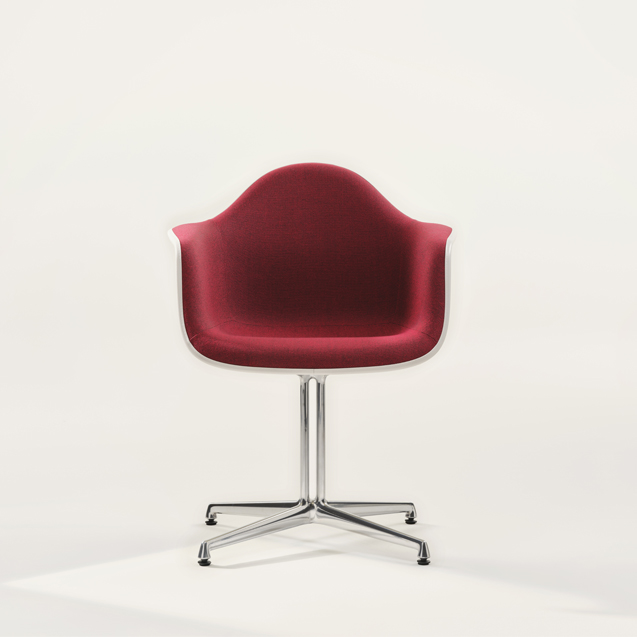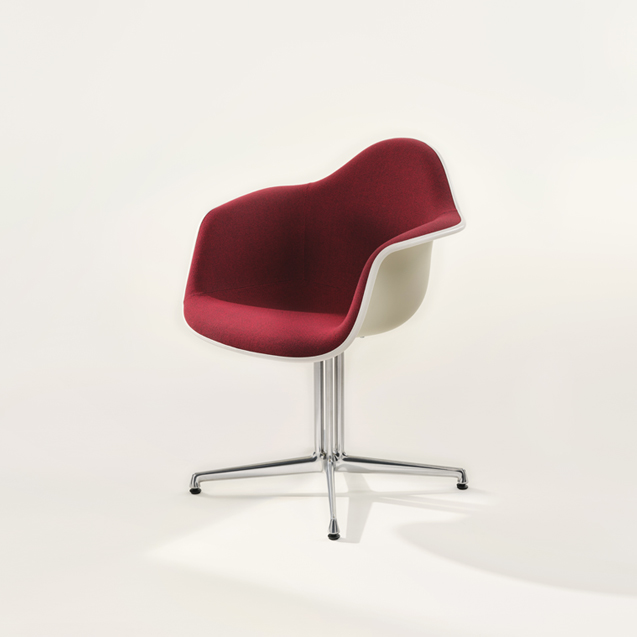Eames Fiberglass Armchair LAR
The Shell Chairs by Charles and Ray Eames are among the most important
designs in the history of furniture. Following their initial presentation at
the 'Low Cost Furniture Design' competition organised by the Museum of Modern
Art in 1948, the chairs were launched on the market in 1950 in an armchair
version (A-shell) and as a simpler side chair (S-shell) – making them the first
ever mass-produced chairs made of plastic.
With the debut of this revolutionary design, Charles and Ray Eames
introduced a new furniture typology that has since spread around the globe: the
multifunctional chair whose shell can be joined with a variety of different
bases. Already in 1950, they presented a series of bases that enabled various
sitting positions, including the low-slung LAR (Lounge Height Armchair Rod
Base) with a geometric steel wire base, which quickly acquired the charming
nickname 'Cat's Cradle' in reference to the children's string game.
The LAR seems to have been one of Charles and Ray's favourite designs:
it can be spotted in numerous vintage photographs of the legendary Eames House
in Pacific Palisades, both indoors and out. This also reveals how lightweight
the chair is, and how easily it can be moved around.
Due to the organic shape of this classic armchair, the LAR is a striking
solo piece, but it can also be paired with many types of sofas to create an
appealing contrast. The LAR is offered as the Plastic Chair LAR with a
polypropylene shell, or as the Fiberglass Chair LAR with a fibreglass shell
that draws attention to the lively texture so valued by connoisseurs. The
fascination of fibreglass lies in its irregular surface, whose clearly visible
fibres make it appear almost like a natural material. The Fiberglass Chair LAR
is not offered with full upholstery in order to show off the unique
characteristics of this material to maximum effect. However, a
comfortable seat cushion is optionally available.
| About Designer | |
|---|---|
Charles & Ray Eames |
Charles Eames, born 1907 in St. Louis, Missouri,
studied architecture at Washington University in St. Louis and designed a
number of houses and churches in collaboration with various partners. His work
caught the attention of Eliel Saarinen, who offered him a fellowship at the
Cranbrook Academy of Art in Michigan in 1938. In 1940, he and Eero Saarinen won first prize in the 'Industrial Design Competition
for the 21 American Republics' - also known as 'Organic Design in Home
Furnishings' – organised by the Museum of Modern Art (MoMA) in New York. Eames
was appointed head of the industrial design department at Cranbrook the same
year. Ray Eames was born as Bernice Alexandra Kaiser in
Sacramento, California, in 1912. She attended Bennett College in Millbrook, New
York, and continued her studies in painting at the Hans Hofmann School of Fine
Arts until 1937. During this year she exhibited her work in the first
exhibition of the American Abstract Artists group at the Riverside Museum in
New York. She matriculated at the Cranbrook Academy of Art in 1940. Charles and Ray Eames married in 1941 and moved to Los
Angeles, where together they began experimenting with techniques for the
three-dimensional moulding of plywood. The aim was to create comfortable chairs
that were affordable. However, the war interrupted their work, and Charles and
Ray turned instead to the design and development of leg splints made of
plywood, which were manufactured in large quantities for the US Navy. In 1946,
they exhibited their experimental furniture designs at MoMA. The Herman Miller
Company in Zeeland, Michigan, subsequently began to produce Eames furniture.
Charles and Ray participated in the 1948 'Low-Cost Furniture' competition at
MoMA, and they built the Eames House in 1949 as their own private residence. In
addition to their work in furniture design and architecture, they also regularly
turned their hand to graphic design, photography, film and exhibition design.
In 1957 Vitra signed a licence agreement with Herman
Miller and began producing the Eameses' designs for Europe and the Middle East.
Charles and Ray Eames have had a profound and lasting influence on Vitra. It
was the encounter with their work that spurred the company's beginnings as a
furniture manufacturer. Yet it is not just the products of Charles and Ray
Eames that have left a mark on Vitra. Even today, their design philosophy
continues to significantly shape the company's values, orientation and goals.
This seminal influence is most clearly reflected in
the question that is always asked at Vitra when making important design
decisions: What would Charles and Ray say? Over the course of their shared
lifetime, the couple gave their answers during trips to Europe and return
visits to California. Since the death of Charles (1978) and Ray (1988), Vitra
has remained in close contact with the Eames family, which now runs the Eames
Office, regarding all matters concerning the preservation, further development
and production of Eames designs. Vitra is the sole authorised manufacturer of
Eames products for Europe and the Middle East. When you own an Eames product
made by Vitra, you know it is an original. |
